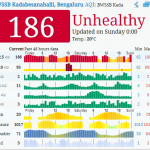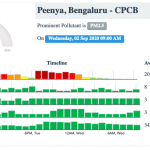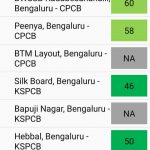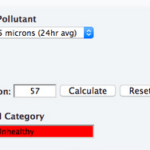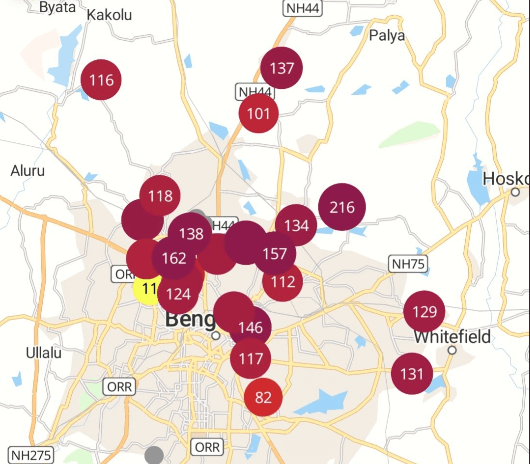
By Chandrima Mazumdar
On November 2, Whitefield had the poorest air quality since lockdown, according to Rahul Bedi’s Whitefield Air Quality report from his weather monitoring station in Whitefield. Bedi, a weather and air quality enthusiast, is running the station since 2013. Whitefield Air Quality which auto-tweets on Air Quality Index (AQI), recorded the worst short-term air quality at 5:20 pm with the AQI at 313 (AQI at and above 301 is considered hazardous).
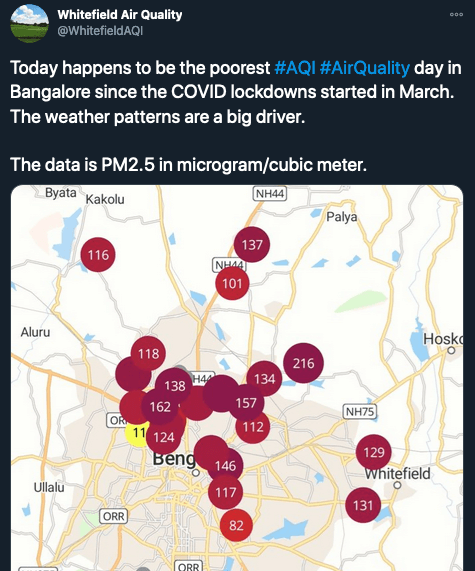
Whitefield Air Quality tweeted about the poorest air quality day since lockdown
Overall during the day
Whitefield registered more than 200 AQI for the maximum part of the day with the quality tipping to ‘Very Poor’ at around 4:20 am, 10 am and 1:30 pm respectively (AQI above 300). Though the quality improved to ‘Satisfactory’ later in the day (between 3:20 to 5:00 pm) with the AQI at 100 or less, the day was recorded as one of the most polluted with an average AQI at 293. Bangalore as a whole recorded an AQI at 159 on Monday, Nov 2.
Air Quality Index (AQI)
The working of an AQI meter is similar to a thermometer which runs from 0 to 500 degrees. However, unlike a thermometer, AQI measures the dips and rises in air pollution. AQI tracks the presence of five major air pollutants: Ground-level ozone, Carbon monoxide, Sulphur dioxide, Nitrogen dioxide and, airborne particles or aerosol.
Effects
An AQI of 300 or more may cause respiratory illnesses to people on prolonged exposure, while that of 200 or more may have severe effects on people who are suffering from lung, heart or any other respiratory ailments as well as children and senior citizens.
Bengaluru Weather, a group of weather enthusiasts, mentioned that the highest mean sea level pressure (MSLP) was also recorded on the same day which could be attributed to the high level of pollution. Greenhouse gases (of which most of the gaseous pollutants are a part of) have long since been attributed to being one of the major causes of the rising sea levels in the recent days. Incidentally, this was not just a Whitefield or Bangalore weather phenomenon. According to Bengaluru Weather, the entire southern peninsula is experiencing air pollution: “Our air quality monitoring station in Coorg located in a densely forested area show the same trends as Whitefield.”
But why do these statistics don’t figure in the weather reports of the state and central pollution control board? Explains Bedi: “Short term AQI is an instantaneous snapshot and the 24 hour AQI is the daily rolling average AQI. Short term is more useful for planning activities and 24 hr is what authorities report.” And the reason for the spike? According to weather experts, the southwest monsoon has abated, signalling the end of the rainy season. This has resulted in the combination of north-easterly winds and higher pressure levels, causing bad weather. The total rain received in Bangalore, according to the Met Department is as follows — Jun: 114.8mm. July: 158.3mm. August: 75.8mm. September: 300mm. October: 204.3mm.
This evening’s weather in Whitefield
As of 6:57pm, the AQI in Whitefield was at 209 which can cause difficulty in breathing due to continuous exposure, and be particularly discomforting to those suffering from heart and lung disease.

